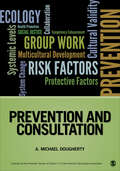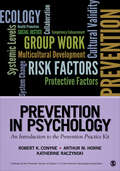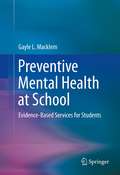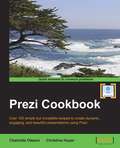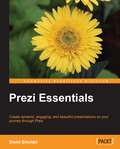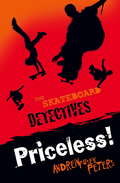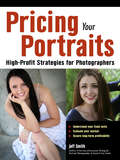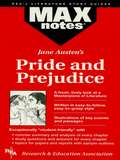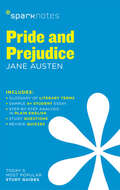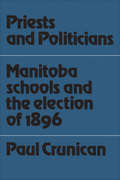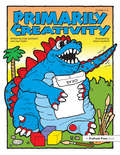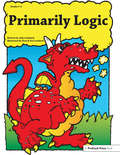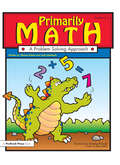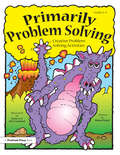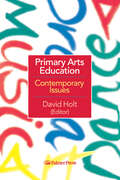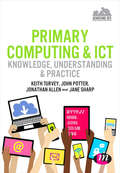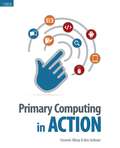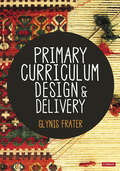- Table View
- List View
Prevention and Consultation (Prevention Practice Kit)
by A. Michael DoughertyThis sixth book in the Prevention Practice Kit provides an introduction to evidence-based prevention in psychology. Counselors, psychologists and mental health workers in schools, government agencies, community settings, and in private practice are increasingly expected to select evidence-based practices and programs, and to document the effectiveness of the care they provide. The book addresses the types of questions that may be most pertinent to counselors, psychologists, and other mental health workers who are engaged in prevention and interested in understanding evidence-based programs, including:What does it mean to for a program to be evidence-based?How should I go about selecting an evidence-based program?How do I know if evidence is trustworthy?How do I gather evidence to evaluate my own prevention program?The book introduces several definitions of evidence-based practice and the common components of these definitions. A broad overview of considerations for evaluating the quality and trustworthiness of prevention research is provided along with a discussion of common features of effective prevention programs. Guidance is provided on identifying evidence-based programs, including detailed descriptions of online registries of prevention programs. The book also provides recommendations for determining the need for a prevention program, selecting and implementing an appropriate program, and evaluating outcomes. Throughout the text, examples from research and practice are used to illustrate important concepts, and learning exercises at the end of each chapter augment comprehension and relevance.This book is part of the Prevention Practice Kit: Action Guides for Mental Health, a collection of eight books each authored by scholars in the specific field of prevention and edited by Dr. Robert K. Conyne and Dr. Arthur M. Horne. The books in the collection conform to the editors′ outline to promote a consistent reading experience. Designed to provide human services practitioners, counselors, psychologists, social workers, instructors, and students with concrete direction for spreading and improving the practice of prevention, the series provides thorough coverage of prevention application including a general overview of prevention, best practices, diversity and cultural relevance, psychoeducational groups, consultation, program development and evaluation, evidence base, and public policy.This book is endorsed by the Prevention Section of the Society of Counseling Psychology of the American Psychological Association. Fifty percent of all royalties are donated to Division 17 of the APA.
Prevention in Psychology: An Introduction to the Prevention Practice Kit (Prevention Practice Kit)
by Conyne, Robert K., Horne, Arthur M. and Raczynski, KatherineThis first book in the Prevention Practice Kit overviews the prevention field and Kit contents, and highlights key points emerging through the historical evolution of prevention. It gives special attention to elements that are infused throughout all books: a systemic, ecological approach and community and multi-disciplinary collaboration.Essential competencies needed for delivering prevention programs are identified, such as the collaborative attitude and skills necessary to cross boundaries between health and mental health professionals and between scientific and community experts. All this attention to prevention concepts and skills culminates in an extensive application of prevention focused on bullying, so that readers can see an illustration of how prevention practice can occur. Finally, to further boost applied practice, examples are sprinkled throughout the book accompanied by a set of learning exercises. An extensive set of references concludes the book.This book is part of the Prevention Practice Kit: Action Guides for Mental Health, a collection of eight books each authored by scholars in the specific field of prevention and edited by Dr. Robert K. Conyne and Dr. Arthur M. Horne. The books in the collection conform to the editors′ outline to promote a consistent reading experience. Designed to provide human services practitioners, counselors, psychologists, social workers, instructors, and students with concrete direction for spreading and improving the practice of prevention, the series provides thorough coverage of prevention application including a general overview of prevention, best practices, diversity and cultural relevance, psychoeducational groups, consultation, program development and evaluation, evidence base, and public policy.This book is endorsed by the Prevention Section of the Society of Counseling Psychology of the American Psychological Association. Fifty percent of all royalties are donated to Division 17 of the APA.
Preventive Mental Health at School
by Gayle L. MacklemSome engage in high-risk behaviors. Others need help with emotional skills. Many are affected by mental disorders. While every school has its share of students needing comprehensive mental health services, personnel struggle to address these needs effectively in an era of scarce resources and dwindling budgets. Preventive Mental Health at School gives school-based practitioners and researchers an accessible, nuanced guide to implementing and improving real-world proactive programs and replacing outmoded service models. Based firmly in systems thinking and an ecological-public health approach, the book outlines the skills needed for choosing evidence-based interventions that are appropriate for all students, and for coordinating prevention efforts among staff, educators, and administration. As schools become more and more diverse, school-based practitioners must become knowledgeable in regard to the critical racial and cultural differences that affect students, their families, and enrich our schools. Research currently available to help meet the needs of various groups of children and their families is included as each topic is addressed. In addition, the author provides a theoretical groundwork and walks readers through the details of assessing resources and needs, applying knowledge to practice, and evaluating progress. Instructive case examples show these processes in action, and further chapters address questions of adapting programs already in place for greater developmental or cultural appropriateness. Included in the coverage: Student engagement, motivation, and active learning. Engaging families through school and family partnerships. Evidence-based prevention of internalizing disorders. Social emotional learning. Adapting programs for various racial and ethnic populations. Adapting programs for young children. Preventive Mental Health at School offers solid guidance and transformative tools to researchers, graduate students, and professionals/practitioners/clinicians in varied fields including clinical child and school psychology, social work, public health and policy, educational policy and politics, and pediatrics.
Prezi Cookbook
by Christina Hoyer Charlotte OlssonThis book is intended for both beginners who want to get started with Prezi as well as experienced users who want to enhance their knowledge of Prezi. If you are a seasoned presenter, you can use this book to quickly transfer your presentation skills to Prezi. If you are new to presenting, the guidelines and tips in this book take you by the hand and guide you to complete mastery of Prezi.
Prezi Essentials
by Domi SinclairIf you want to learn Prezi, and specifically design within Prezi, this is the book for you. Perhaps you already know a bit about Prezi but have never used it, or perhaps you have used Prezi before but want to learn how to incorporate your own custom design elements. In either case, this book will get you up and running quickly. It would be helpful to have a bit of familiarity with basic design concepts and the use of Prezi, but prior experience is not essential.
Priceless! (Skateboard Detectives #4)
by Andrew Fusek PetersWhen a Faberge egg is stolen and makes an appearance on the black market, Charlie's ex-con dad is an immediate suspect. But the Skateboard Detectives know that he's been set up, and they know just how to get the real criminals bang to rights...
Pricing Your Portraits
by Jeff SmithPortrait photographers agree that one of the most important yet shrouded aspects of running a successful business is accurately pricing your products for profit. Some charge too little, then scramble to photograph and edit photos for throngs of clients, only to become overwhelmed and burn out. Others price too low initially, just to get people in the door, but soon mark up their prices and lose clients to new photographers who charge rock-bottom prices. There are still others who price themselves out of the game right out of the gate.Jeff Smith, owner of two thriving portrait studios teaches you how to tackle one of photography's most vexing problems-working out a pricing structure that allows you to cover your costs and clear a profit that you can live comfortably with. Smith begins by showing you methods that he-and countless other pros-have used in a misguided attempt to reap a great cash flow, helping you avoid time-and-revenue-burning missteps. Next, he walks you through the process of figuring out where your money goes-How much should you shell out for new equipment? What falls into the category of "overhead?" How much do you need to pay your staff and yourself?-and then moves on to show ways to cut costs, price individual prints and packages, maintain your desired business volume, retain existing clients, and delegate tasks in order to work smartly toward profitability-all while enjoying your work and achieving professional and creative satisfaction.
Pride - Thief Of The Holocaust: Thief Of The Holocaust
by Charles Hugo DoyleFather Charles Hugo Doyle presents spiritual conferences to nuns (adaptable also for use in religious communities of men) on the virtues of humility, purity and the love of God. Most of the conferences are on humility and its opposed vice of pride. The Gospels, the saints and spiritual writers are drawn on, particularly St. Thomas, St. Bernard and St. Benedict. Although doctrine is expounded, the talks are basically practical and directly addressed to the present situations of religious life.The author stresses the dire effects of the offshoots of pride, presumption, envy, vainglory, boastfulness, hypocrisy, disobedience and discord. He distinguishes pride from legitimate self-esteem and desire for the esteem of others, and suggests concrete tests for the detection of pride in complex human motivations.
Pride and Prejudice (MAXNotes Literature Guides)
by William BlanchardREA's MAXnotes for Jane Austen's Pride and Prejudice MAXnotes offer a fresh look at masterpieces of literature, presented in a lively and interesting fashion. Written by literary experts who currently teach the subject, MAXnotes will enhance your understanding and enjoyment of the work. MAXnotes are designed to stimulate independent thought about the literary work by raising various issues and thought-provoking ideas and questions. MAXnotes cover the essentials of what one should know about each work, including an overall summary, character lists, an explanation and discussion of the plot, the work's historical context, illustrations to convey the mood of the work, and a biography of the author. Each chapter is individually summarized and analyzed, and has study questions and answers.
Pride and Prejudice SparkNotes Literature Guide (SparkNotes Literature Guide Series #55)
by SparkNotesPride and Prejudice SparkNotes Literature Guide by Jane Austen Making the reading experience fun! When a paper is due, and dreaded exams loom, here's the lit-crit help students need to succeed! SparkNotes Literature Guides make studying smarter, better, and faster. They provide chapter-by-chapter analysis; explanations of key themes, motifs, and symbols; a review quiz; and essay topics. Lively and accessible, SparkNotes is perfect for late-night studying and paper writing. Includes:An A+ Essay—an actual literary essay written about the Spark-ed book—to show students how a paper should be written.16 pages devoted to writing a literary essay including: a glossary of literary termsStep-by-step tutoring on how to write a literary essayA feature on how not to plagiarize
Pride and Progress: Making Schools LGBT+ Inclusive Spaces
by Adam Brett Jo BrassingtonPride & Progress began as a podcast created to amplify the voices of LGBT+ educators and allies. This book builds upon the podcast’s success to create an essential guide for teachers and educators who want to make their educational spaces LGBT+ inclusive. The book combines academic theory and the lived experiences of our guests to explore ten key themes. Each chapter explores one of these themes, providing the knowledge, language and strategies that schools need to make their educational spaces inclusive for all.
Pride and Progress: Making Schools LGBT+ Inclusive Spaces
by Adam Brett Jo BrassingtonPride & Progress began as a podcast created to amplify the voices of LGBT+ educators and allies. This book builds upon the podcast’s success to create an essential guide for teachers and educators who want to make their educational spaces LGBT+ inclusive. The book combines academic theory and the lived experiences of our guests to explore ten key themes. Each chapter explores one of these themes, providing the knowledge, language and strategies that schools need to make their educational spaces inclusive for all.
Priests and Politicians: Manitoba Schools and the Election of 1896
by Paul CrunicanIn the decade beginning with the hanging of Louis Riel in 1885, a series of radical and religious conflicts shook Canada, culminating in the Manitoba school crisis of the 1890s. By 1896, the focal point of the controversy was remedialism, the attempt to have Roman Catholic school privileges in Manitoba restored by federal action against the provincial government. The struggle over remedialism involved nearly every aspect of Canada's internal history – Conservative-Liberal, federal-provincial, east-west, French-English, Catholic-Protestant, church-state. But, illustrating as it does the complexity and sensitivity of the ground where politics and religion meet, the election of 1896 has remained particularly fascinating for the degree to which Roman Catholic church authorities, above all in Quebec, entered the political process and were involved in the struggle to power of Wilfrid Laurier. The school question and the struggle over remedialism present an illuminating case study of complex relations at a formative period in Canadian history. This book focuses on the scene behind the scene, seeking in particular to discover how Quebeckers, civil and ecclesiastical, were reacting to a key problem of French and Catholic rights outside Quebec. There is a strong emphasis on personal correspondence, rather than on published statements, and the author has marshalled a wide range of material that has never been fully exploited. The story is told chronologically in order to assess the impact of major events as it developed. Many of the classic questions of church-state relations are brought into focus. This is a story often of fear, prejudice, and ignorance, but it is also a story of strength and resilience, principle and faith. Uniquely Canadian, it tells us something important about the shift from the Canada of Macdonald to the Canada of Laurier.
Primarily Creativity: Grades 1-3
by Judy Leimbach Joan VydraAn emphasis on creative thinking skills in the classroom necessitates providing students with open-ended assignments and encouragement as they search for new answers. Unlike typical textbook questions that have a given right answer, creative questioning and thinking assumes that there may not be one right answer, but many possibilities.Primarily Creativity bubbles over with ideas to spark creative talent in young students. Get creative juices flowing with lessons in eight areas of creativity including:curiosity, fluency, originality, imagination, awareness, flexibility, elaboration, and perseverance.Each section includes an explanation on the skill, questions that foster this type of thinking, a list of tasks, and several attractive, reproducible worksheets. This comprehensive text provides an enjoyable, balanced introduction to creative thinking.For more problem ideas on integrating creativity in your classroom, see Primarily Problem Solving.Grades 1-3
Primarily Logic: Grades 2-4
by Judy LeimbachIt's never too early to start building thinking skills—skills that will spill over into other areas of the curriculum and into real life. Primarily Logic consists of a series of units designed to introduce logical thinking to young students. It is an excellent, easy-to-use starting point for teaching well-established forms of logical thinking. Each skill is introduced with examples, and then worksheets give students an opportunity to practice the skill. Group lessons and worksheets provide practice in: finding relationships, analogies, thinking logically using “all” and “none” statements, syllogisms, and deductive reasoning using logic puzzles. Logical thinking is both enjoyable and challenging for students as they build a sound foundation for further instruction in critical thinking. Suggestions for related activities are included in the Instructions for Teachers section.For easier logic activities for younger students, try Lollipop Logic.Grades 2-4
Primarily Math: A Problem Solving Approach (Grades 2-4)
by Sharon Eckert Judy LeimbachIt is important that schools emphasize a problem-solving approach to mathematics beginning in the early years and continuing through high school. Students should learn to value the process of solving problems, as well as getting the correct solutions. The strategies in this book will help students reason, develop their problem-solving strategies, grow in their ability to communicate mathematically, and develop confidence in their mathematical abilities.Five different problem-solving strategies are carefully taught using teacher-directed interactive introductory lessons. A series of practice problems follow the introductory lessons for each strategy. The strategies include: using a manipulative or acting out a problem, drawing a picture or diagram, extending a repeating pattern,making a table or list, and choosing relevant information. Each strategy is first introduced through several carefully presented problems that include introductory group lessons and instructional notes for the teachers. Additionally, the last section of the book presents a variety of problems that give students the opportunity to apply the problem-solving strategies they have learned. This is the perfect supplement to any primary math program, as well as an excellent resource for a math center. All problems are delightfully illustrated and reproducible.Grades 2-4
Primarily Problem Solving: Creative Problem Solving Activities (Grades 2-4)
by Sharon EckertCreative Problem Solving (CPS) is a process that allows people to apply both creative and critical thinking to find solutions to everyday problems. It is a way to enhance creative behavior and also a systematic way to organize information and ideas in order to solve problems. The overall goal of CPS training is to improve creative behavior and problem-solving behavior. The skills involved are: ability to select relevant information ability to summarize information ability to analyze social situations, ability to think creatively to generate possible solutions, ability to evaluate options based on given criteria, ability to plan activities to accomplish a goal, and ability to make inferences. Primarily Problem Solving allows you to give your younger students a head start on problem solving. This book presents creative problem solving in a step-by-step manner young children can understand and enjoy. Use the CPS process to solve the problems of the Three Little Pigs, Rapunzel, and the Frog Prince, as well as more common family problems. Each problem includes illustrated worksheets to take students through each step of the problem-solving process. Teaching notes give instructors additional ideas for using creative problem-solving techniques in the classroom.Fun problems and step-by-step guides will take students successfully from the fuzzy beginning to an effective end. The end result is confidence in being able to think through a solution, rather than just latching on to the most obvious solution. Use these exercises as a part of your thinking skills class or creativity training, as supplementary reading assignments, or as a technique to solve conflicts in the classroom.Expand your knowledge of CPS even more with Primarily Creativity.Grades 2-4
Primary Arts Education: Contemporary Issues
by David HoltFirst published in 1997. Routledge is an imprint of Taylor & Francis, an informa company.
Primary Computing and Digital Technologies: Knowledge, Understanding And Practice (Achieving QTS Series)
by Jonathan Allen Keith Turvey Jane Sharp Dr John Potter Jeremy BurtonWhat do you need to know to teach computing in primary schools? How do you teach it? This book offers practical guidance on how to teach the computing curriculum in primary schools, coupled with the subject knowledge needed to teach it. This Seventh Edition is a guide to teaching the computing content of the new Primary National Curriculum. It includes many more case studies and practical examples to help you see what good practice in teaching computing looks like. It also explores the use of ICT in the primary classroom for teaching all curriculum subjects and for supporting learning in every day teaching. New chapters have been added on physical computing and coding and the importance of web literacy, bringing the text up-to-date. Computing is both a subject and a powerful teaching and learning tool throughout the school curriculum and beyond into many areas of children's learning lives. This book highlights the importance of supporting children to become discerning and creative users of digital technologies as opposed to passive consumers.
Primary Computing and Digital Technologies: Knowledge, Understanding and Practice (Achieving QTS Series)
by Jonathan Allen Keith Turvey Jane Sharp Dr John Potter Jeremy BurtonWhat do you need to know to teach computing in primary schools? How do you teach it? This book offers practical guidance on how to teach the computing curriculum in primary schools, coupled with the subject knowledge needed to teach it. This Seventh Edition is a guide to teaching the computing content of the new Primary National Curriculum. It includes many more case studies and practical examples to help you see what good practice in teaching computing looks like. It also explores the use of ICT in the primary classroom for teaching all curriculum subjects and for supporting learning in every day teaching. New chapters have been added on physical computing and coding and the importance of web literacy, bringing the text up-to-date. Computing is both a subject and a powerful teaching and learning tool throughout the school curriculum and beyond into many areas of children’s learning lives. This book highlights the importance of supporting children to become discerning and creative users of digital technologies as opposed to passive consumers.
Primary Computing and ICT: Knowledge, Understanding and Practice
by Jonathan Allen John Potter Ms Jane Sharp Keith TurveyThis popular text for primary trainees in teaching primary ICT has been updated in line with the new computing curriculum. What do you need to know to teach ICT and computing in primary schools? How do you teach it? This book provides practical guidance on how to teach ICT and the computing curriculum in primary schools alongside the necessary subject knowledge. It explores teaching and learning with applications and technologies, addressing the role of the professional teacher with regards to important issues such as e-safety. This Sixth Edition is updated in line with the new curriculum for computing. It includes new material on how to integrate programming and computational thinking and explores how to harness new tools such as blogging and social media to enrich learning and teaching. Written in an accessible way, it will help trainees to develop confidence in their own approach to teaching. ICT and computing is both a subject and a powerful teaching and learning tool throughout the school curriculum and beyond, into many areas of children's learning lives. This text highlights the importance of supporting children to become discerning and creative users of technology as opposed to passive consumers.
Primary Computing in Action
by Ben Sedman Yasemin AllsopPresenting practical ideas that support teachers and trainees with the planning, implementation and assessment of the 2014 Primary Computing Curriculum. Demonstrating how freely available apps and web-based applications, programmes for PCs and Macs, can be used creatively to design innovative and engaging activities in the Early Years, Key Stages 1 and 2. Covering all aspects of the 2014 primary curriculum, including computer science, digital literacy and information technology. Includes both plugged and unplugged activities.
Primary Computing in Action
by Ben Sedman Yasemin AllsopPresenting practical ideas that support teachers and trainees with the planning, implementation and assessment of the 2014 Primary Computing Curriculum. Demonstrating how freely available apps and web-based applications, programmes for PCs and Macs, can be used creatively to design innovative and engaging activities in the Early Years, Key Stages 1 and 2. Covering all aspects of the 2014 primary curriculum, including computer science, digital literacy and information technology. Includes both plugged and unplugged activities.
Primary Curriculum Design and Delivery
by Glynis FraterThis is a practical guide for school leaders and teachers who have responsibility for designing and delivering a sequenced, knowledge-rich and skills-focused primary curriculum. It considers the elements that underpin a high-quality curriculum and how to create a sequential learning experience for pupils across the primary phase. It explores a range of practical tools and techniques that can support staff to build a cohesive curriculum where pupils build on their learning from year to year with high-quality outcomes for all learners, whatever their starting point. Key topics include: How to create a whole school curriculum strategy that builds on prior learning and ensures knowledge and skills across a range of subjects Creating opportunities for pupils to make connections across their learning How learning is sequenced from early years to the end of Year 6 Identifying opportunities for pupils to deepen their competence in English, mathematics and across all the foundation subjects Glynis Frater is the founder and a director of Learning Cultures. She has taught across both the primary and secondary phases of education and has led professional development on planning and delivering the primary curriculum.
Primary Curriculum Design and Delivery
by Glynis FraterThis is a practical guide for school leaders and teachers who have responsibility for designing and delivering a sequenced, knowledge-rich and skills-focused primary curriculum. It considers the elements that underpin a high-quality curriculum and how to create a sequential learning experience for pupils across the primary phase. It explores a range of practical tools and techniques that can support staff to build a cohesive curriculum where pupils build on their learning from year to year with high-quality outcomes for all learners, whatever their starting point. Key topics include: How to create a whole school curriculum strategy that builds on prior learning and ensures knowledge and skills across a range of subjects Creating opportunities for pupils to make connections across their learning How learning is sequenced from early years to the end of Year 6 Identifying opportunities for pupils to deepen their competence in English, mathematics and across all the foundation subjects Glynis Frater is the founder and a director of Learning Cultures. She has taught across both the primary and secondary phases of education and has led professional development on planning and delivering the primary curriculum.
